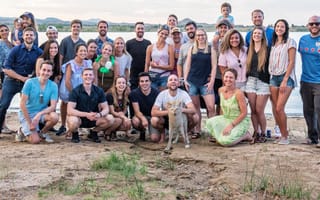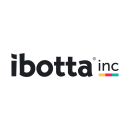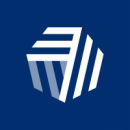Like with just about everything in the tech industry, scaling a team lightning fast should be done intentionally and strategically. Taking a pause before going on a hiring spree is not the easiest thing to do, though, especially when team heads are clamoring for help and forecasts show that the projected sales might be just out of reach if more hires aren’t made ASAP.
The good news is that people can do two things at once.
A team lead can focus on making hires and finding ways for their people to work more efficiently. C-level leaders can set their organization’s growth strategy and simultaneously work to ensure that those charged with carrying it out are supported in their efforts. The onboarding process can both get new hires up to speed quickly and make it clear how newcomers can contribute to the next stage of the company’s growth.
Four Colorado tech leaders gave us this advice and more. They spoke with Built In about recent periods of rapid growth at their company and what they learned from them. While their experiences differ, all took intentional approaches and had larger goals in mind besides simply increasing headcount.
When a team has more work than it can handle, the natural solution is to hire more people. The idea is that the bigger the team the more that can get done. And while this is true to a point, it doesn’t take into account how efficient people are working. When the pandemic required Frick, senior director or business operations at Ibotta, to grow her team, she decided to also focus on refining processes and tools for increased efficiency.
Tell us a bit about the team that scaled and your role on it.
I lead a group of business units that manage the set up, launch and monitoring of thousands of cash back campaigns each month. My team needed to scale up last year following Ibotta’s launch of cash back rewards for online grocery purchases, which quintupled due to the pandemic. Ibotta was well-positioned to meet this sudden need, and our monthly campaign volume has more than doubled since then.
Simply doubling our workforce would not have been a cost-effective or sustainable way to support the increased demand, so I proposed and led the implementation of a new organizational design for the campaign delivery teams. One of the key components of the change was to pull all of the executional work into a ticketing system to enable increased throughput and efficiency. We made many improvements to our processes and tools, and ultimately we only needed to increase the team size by about 40 percent to support the more than 100 percent increase in campaign volume.
It’s critical to establish comprehensive, real-time visibility into quality metrics prior to making major changes.”
What was the process of scaling like and how long did it take?
The new org design took about two months to pilot, adjust and implement. That said, we continue to analyze our processes and make improvements almost every week to support scalability. No matter how much planning occurs, there will always be unforeseen challenges during major restructures. In this case, many new jobs were opened across the organization due to company growth, and operations employees landed new opportunities at an unprecedented rate. My team is a great pipeline for talent, and it was wonderful that so many people were advancing, but the remaining campaign operations team was under-staffed and under-experienced.
It became difficult to deliver high-quality campaigns, and it took longer to achieve the benefits of the restructure than projected. We learned that it’s critical to establish comprehensive, real-time visibility into quality metrics prior to making major changes so you don’t have blind spots and can address unforeseen challenges quickly. Also, it’s helpful for pilots to be conducted with both tenured and new employees to make sure that success is not reliant upon having experienced staff.
What’s the most exciting project the team will be taking on in the next few months?
Ibotta and Walmart recently announced a strategic agreement to create and launch a new digital offers program on Walmart.com and the Walmart app, providing customers with access to hundreds of cash rebates on popular products. This program means that my team will need to further increase our ability to quickly launch high-quality campaigns at scale. This is an exciting opportunity, and we are again preparing to scale through a combination of proactive hiring as well as process improvements and robust tooling optimizations.
We recently conducted a failure modes and effects analysis to understand the most likely process failures and their impact. This exercise resulted in a prioritized list of process and tooling enhancements that we will be tackling over the next few months. We will be improving our new employee training, consolidating and integrating our tools, and automating components of the campaign set up process. I can’t wait to look back next year and see how we have again transformed operations to help the business reach new heights.
Tech companies often take an “all hands on deck” approach during periods of massive growth, with employees helping with recruiting and onboarding new employees. That was the case when Uplight nearly doubled in size over the past year. CEO Tuck explained how team members from across the business stepped up and helped the people team make new employees feel welcome and up to speed.
Tell us a bit about the team that scaled and your role on it.
The Uplight team has grown from 350 to more than 600 people in the last 12 months — and we’re still growing. In particular, the engineering organization has scaled significantly as we work on the next generation of our platform. As CEO, my role was primarily to ensure clarity on the goals for these new additions and that we were properly funding this investment in our financial planning. It was also important to have the right leaders in place, not just to hire the team and achieve our goals but also to properly incorporate new teammates to ensure they would learn and add to our culture. The people we add now need to become the base for our next stage of growth, which is not long from now.
For this to work, the whole company needed to embrace recruiting and onboarding.”
What was the process of scaling like and how long did it take?
It’s tough to grow that fast during Covid-19 and maintain and grow your culture at the same time. For this to work, the whole company needed to embrace recruiting and onboarding. We found new ways to onboard people over Zoom and were intentional about making our new team members feel included. While the people team led our hiring, onboarding and inclusion efforts, only so much can happen centrally through that department. Hiring managers and senior leadership proactively reached out to their networks and found ways to connect with their teams virtually.
We’ve used things like executive meetups, Donuts or virtual coffees with new people; and more cross-departmental meetings and working teams, in addition to the more typical onboarding training and team one-on-one tours. Our peer-to-peer recognition program, where employees receive cash funds via a Bonusly account, has been really successful. We are able to see how teams are cross-functioning and how our Uplighters are working and celebrating with one another.
What’s the most exciting project the team will be taking on in the next few months?
We are launching a number of new projects on a 2.0 version of our underlying platform. These products are designed to help decarbonize energy for home and building owners to help meet one of the greatest challenges we face today: climate change. Our vision is for our platform to connect the dots between utilities, customers and more of the great new low-carbon products and services coming to the market. Working together in an orchestrated way, these three groups can rapidly accelerate the decarbonization of the grid that is already underway.
Not only is the goal motivating for us all, but it also requires the whole company’s effort to succeed. Unlike some efforts that can be boiled down to a single new product launch, our current investments in this strategy include continued scaling and expansion of our underlying technology and processes, the creation of several new products and outstanding execution with our existing clients. This means that everyone at Uplight has an opportunity to contribute directly to the most exciting parts of our future.
Continual growth is the goal of all tech companies, which is why Wood, lead director of project delivery at Wunder, said her company works hard to instill a “product mindset” in new hires. This mindset, one that focuses on making product improvements and product development everyone’s responsibility, is designed to ensure new hires are prepared from the jump to contribute the ideas that will fuel the business’s next stage of scaling.
Tell us a bit about the team that scaled and your role on it.
Wunder’s project delivery team develops and builds commercial solar projects across the country. Our goal is to acquire commercial customers for our national network of solar partners by leveraging Wunder’s technology platform. Specifically, we’re focused on driving growth in the untapped sub-megawatt-scale commercial market. We’ve seen a massive increase in demand from commercial real estate property owners for solar development and financing services and our team can’t keep up. I began leading the team in June and saw immediately that we needed to scale up to meet the demands of the projects in our pipeline.
Over the summer, we doubled in size, and are actually in the middle of our next capital raise, specifically to allow us to bring on additional resources for this team as well as across the broader organization. It’s always been Wunder’s mission to accelerate the adoption of small-to-medium commercial solar and tap this segment of the market that’s historically lagged behind others, so we are thrilled to be able to continue to drive these types of projects forward and hope to expand significantly.
Onboarding for us doesn’t just mean training people on deals or client specifics. It’s also about getting people to have a product mindset.”
What was the process of scaling like and how long did it take?
When you join Wunder, your job is not only to execute on the task at hand. It’s also about building the “machine” that allows us to crank through deals faster and at lower costs, which will ultimately enable us to move the commercial and industrial solar market. While we have a dedicated product team who work closely with our engineers, everyone at Wunder is “in product” and is responsible for ensuring we focus on serving up well-formulated processes that can then be turned into software.
Onboarding for us doesn’t just mean training people on deals or client specifics. It’s also about getting people to have a product mindset, which can feel unnatural for those who’ve never worked at a tech company before. We’ve taken deliberate steps to help people acclimate to this culture, such as instituting a weekly iteration meeting during which people can serve up tickets for product improvements or ideas and by having a product team member sit in on all our team meetings.
What’s the most exciting project the team will be taking on in the next few months?
We are most excited about continuing to bring projects online! A number of them should be hitting substantial completion before the end of the year, which we’re of course psyched about. Aside from that, our product team just released a new version of our project management system that will yield massive efficiency gains for the team. There will be some work to roll this out and transition existing projects onto the new system, but we are incredibly excited about the new functionality and the many benefits it will bring to our entire process.
When taking on the challenge that is scaling a team lightning fast, Cloutier, global VP of people and culture at Cin7, has some simple advice: begin with the end in mind. Starting with a goal in mind and working backward from it served Cloutier and her team well last year as they scaled their people team from a small outfit into one that spanned the globe in order to match Cin7’s rapid growth.
Tell us a bit about the team that scaled and your role on it.
Cin7 was blessed with incredible growth over the past year, and we found ourselves with the joy of an extended workforce spanning the globe. We had to pivot fast, innovate and lean into a new way of thinking about the best way to support our number one asset, our people. I’m proud of the people team and their ability to adapt and be resilient to new processes and ways of thinking. Almost overnight, we shifted from a very small, centrally focused people team in one country to an expanded regional HR business partner model in the Americas, APAC and EMEA, establishing local expertise and critical leadership partnerships around the globe to drive our business forward through our culture and trusted partnerships.
When looking at any problem, especially with opportunities for high growth, it is important to begin with the end in mind.”
What was the process of scaling like and how long did it take?
When looking at any problem, especially with opportunities for high growth, it is important to begin with the end in mind. We were able to look at our current structure, which did not fit our changing business needs, and scale up in a global capacity that kept our core strengths and values. We charged forward to establish a scalable global people organization that is better suited to support our core initiative: put people at the heart of everything we do. With the right structure and the right players, you can really feel the momentum and energy brought into the team that then carries over into our work to care and support our employees.
What’s the most exciting project the team will be taking on in the next few months?
The journey ahead includes embracing our new people team and solidifying our foundations. Then the real fun begins! We will be launching our candidate and employee journey; brand and engagement focus; employee total wellness program; and global policy work that brings in our values, inclusivity and honors our culture. We’re also going to make sure to grab opportunities to sprinkle a little magic in the form of recognition so that the focus always comes back to our best asset: our people.












